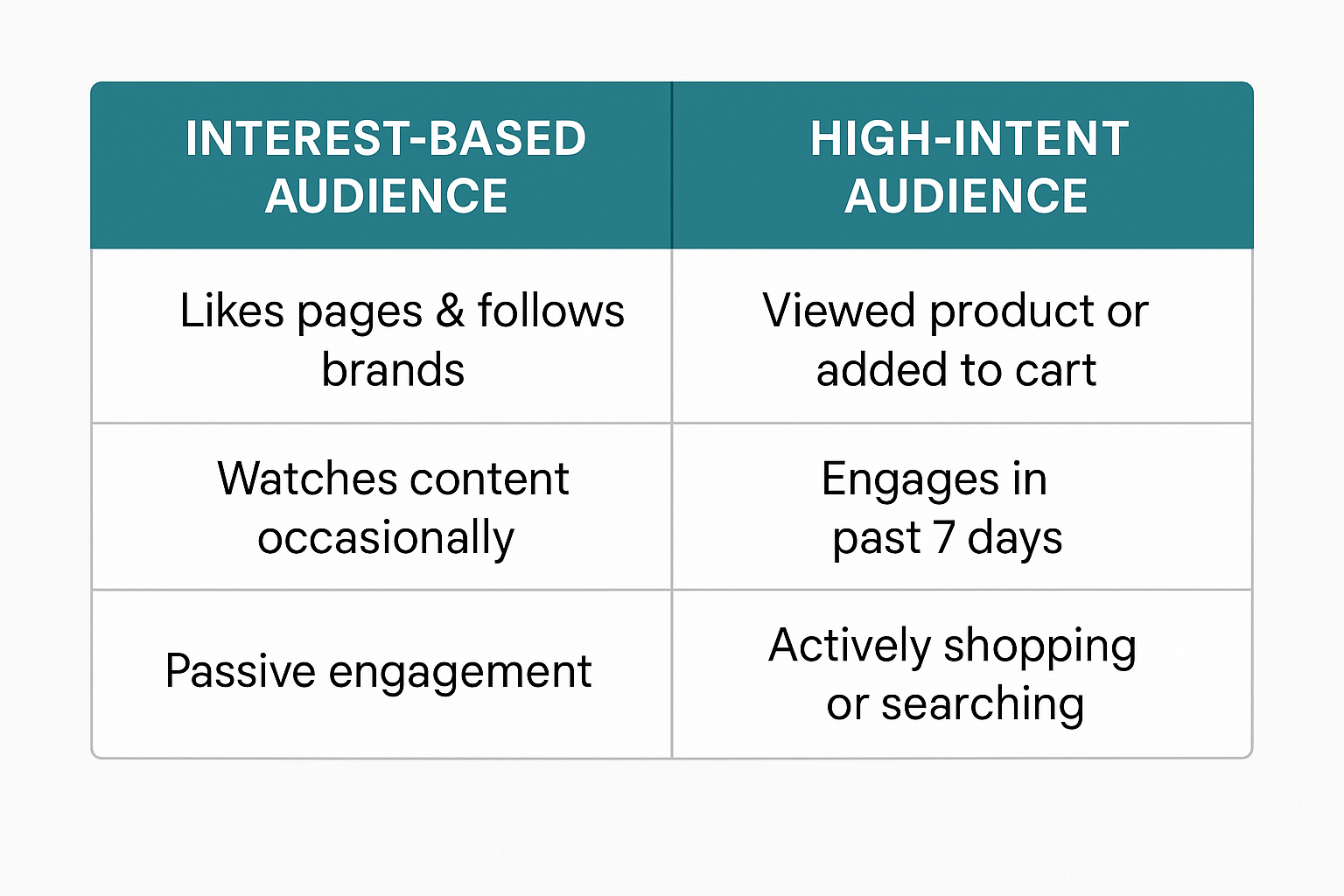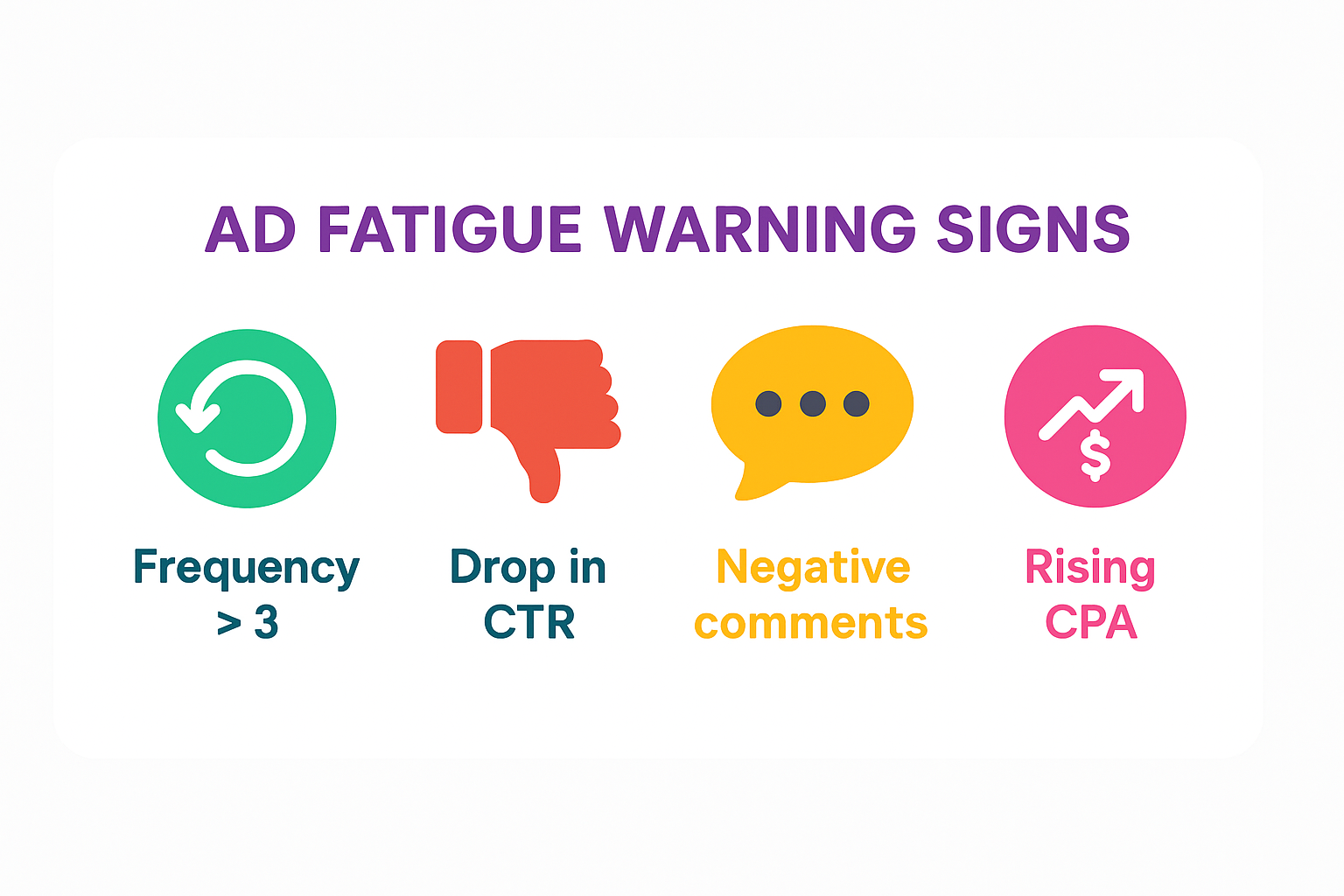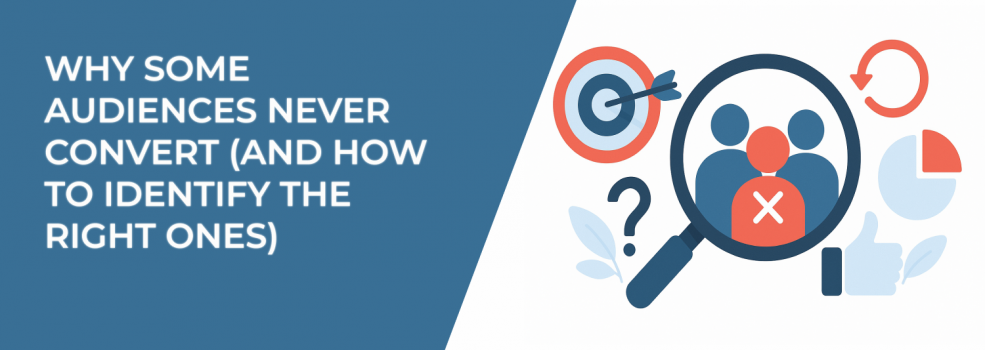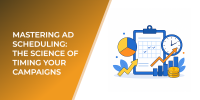Some audiences will eat up your ad budget without buying a thing. Sound familiar?
If you've ever stared at a campaign report wondering why conversions flatlined despite solid CTRs and reach, you’re not alone. The truth? Not every audience is worth your spend.
Let’s break down why certain audiences never convert, how to identify them early, and — more importantly — how to find the ones that do.
1. The Illusion of “Interest-Based” Audiences
Facebook’s broad interest categories might look appealing — Fitness Enthusiasts, Travel Buffs, Tech Lovers — but interest doesn’t equal buying intent.

Someone might follow a brand or like a page from two years ago, but that doesn’t mean they’re ready to purchase today. These audiences often click but don’t convert.
Before you waste budget on low-intent pools, read Why Broad Interest Targeting Wastes Ad Budgets. It outlines the cost of relying on weak intent signals.
What to try instead:
-
Combine custom events with detailed targeting;
-
Create lookalikes from recent buyers, not just email lists;
-
Layer engagement signals (e.g., time on site, video watch time, product views).
Need help with precision targeting? Try How to Layer Detailed Targeting for Hyper-Specific Facebook Audiences.
2. Vanity Metrics Don’t Pay the Bills
High CTR? Cool. Low CPM? Nice. Still no sales? That’s a problem.
These are the campaigns that look good on dashboards but don’t drive revenue. They attract “clickers,” not buyers.
Here’s how to tell it’s happening:
-
CTR is high, but ROAS is flat or negative;
-
Bounce rate is up, and no one’s adding to cart;
-
Lots of comments or likes, but zero conversions.
This is one of the most common traps for advertisers — and Facebook Ads Not Converting: How To Fix It breaks down how to escape it.
3. Frequency Fatigue Is Real
Even the right audience stops responding after seeing your ad five times in three days.
Ad fatigue creeps in fast — especially if your creative or message stays the same.

Watch out for:
-
Frequency climbing above 3, while CTR drops;
-
Negative comments or sarcasm in replies;
-
Cost per result spiking without reach growth.
Want to stay ahead of burnout? Read Ad Fatigue on Facebook: How to Spot It Early and Fix It Fast for early-warning signs and solutions.
4. Your Message May Be Misaligned
You might be saying the right thing — just to the wrong crowd. Or the wrong thing to the right crowd.
Either way, misalignment kills conversions.
Ask yourself:
-
Are you selling to bargain hunters with premium language?
-
Are you pitching features, when they care about benefits?
-
Is your messaging built for decision-makers or first-time discoverers?
Not sure? This breakdown on Creating Persona-Driven Targeting Strategies on Facebook shows how to get back in sync.
5. What High-Intent Audiences Actually Look Like
Once you weed out underperformers, the real question is — who does convert?
High-intent audiences tend to behave differently. They're not just curious — they’re closer to purchase.
Traits of high-performing audiences:
-
Recently engaged (e.g., 7-day video viewers, added to cart, or visited product pages);
-
Behavior-based triggers (e.g., scroll depth, time on site, or repeat visits);
-
Lookalikes built from actual buyers, not just leads or site visitors;
-
Tight retargeting windows (1–3 days vs. 30+ days).
Need help spotting them? Read How to Identify High-Intent Audiences Using Facebook Insights.
Also, explore Behavior-Based Facebook Targeting: The Secret Weapon of Top E-commerce Brands to build stronger segments.
6. Let Your Data Be Brutal
It’s tempting to keep spending on an audience just because it once worked. Or because it should work.
But guess what? The data doesn’t lie.
Audit by:
-
ROAS by audience segment;
-
Conversion rate by targeting layer;
-
CPL or CPA trend over time.
Then — turn off what doesn’t work. Even if you like the targeting theory. Even if it worked last quarter.
Looking for a step-by-step process? Facebook Ads Funnel Strategy: From Audience Identification to Conversion shows how to structure and test properly across the funnel.
Final Take: Sharpen or Stall
The biggest mistake marketers make? Waiting too long to pivot.
Every dollar you spend on low-converting audiences is a dollar you can’t put into scaling a winning one. Don’t wait for proof in the form of poor results. Cut early, scale fast, and let real signals — not assumptions — guide your next move.

